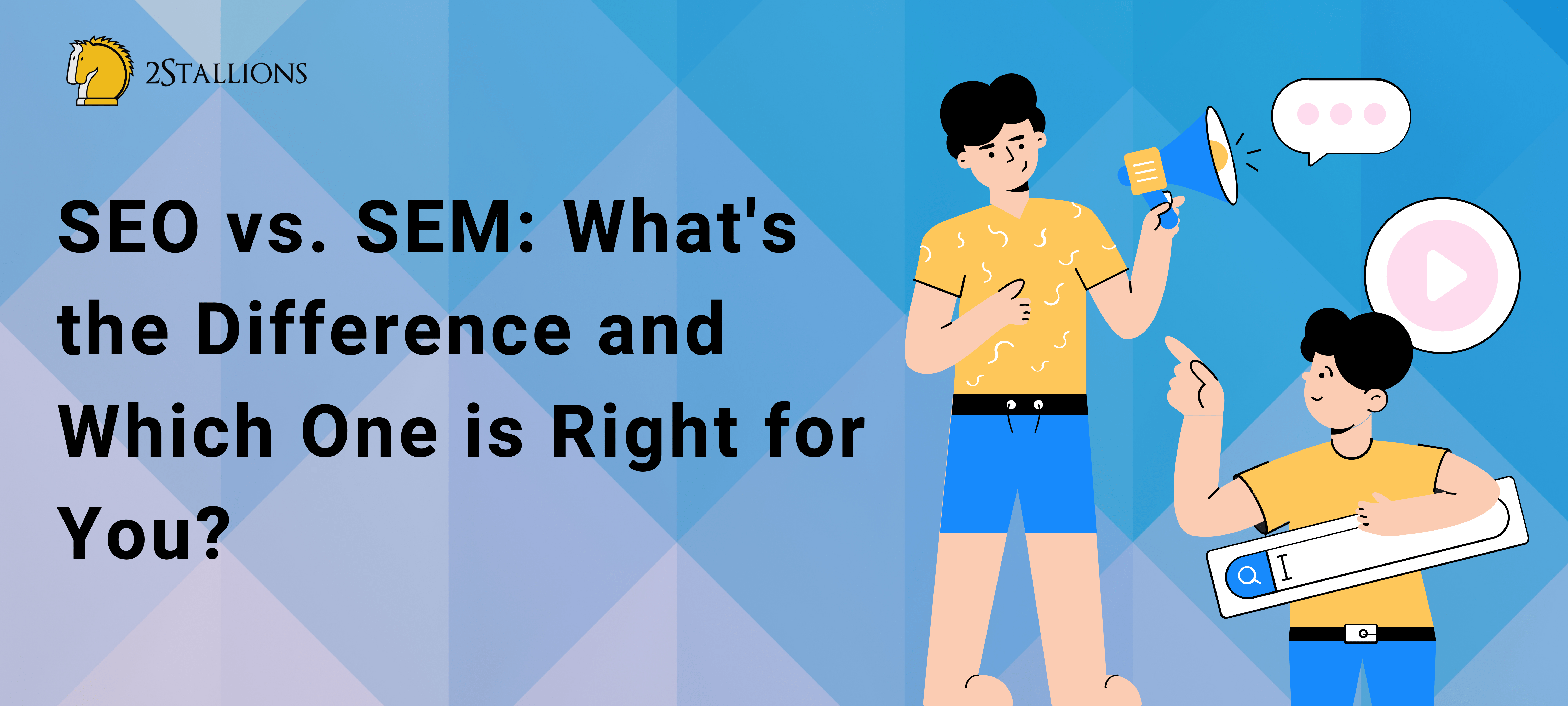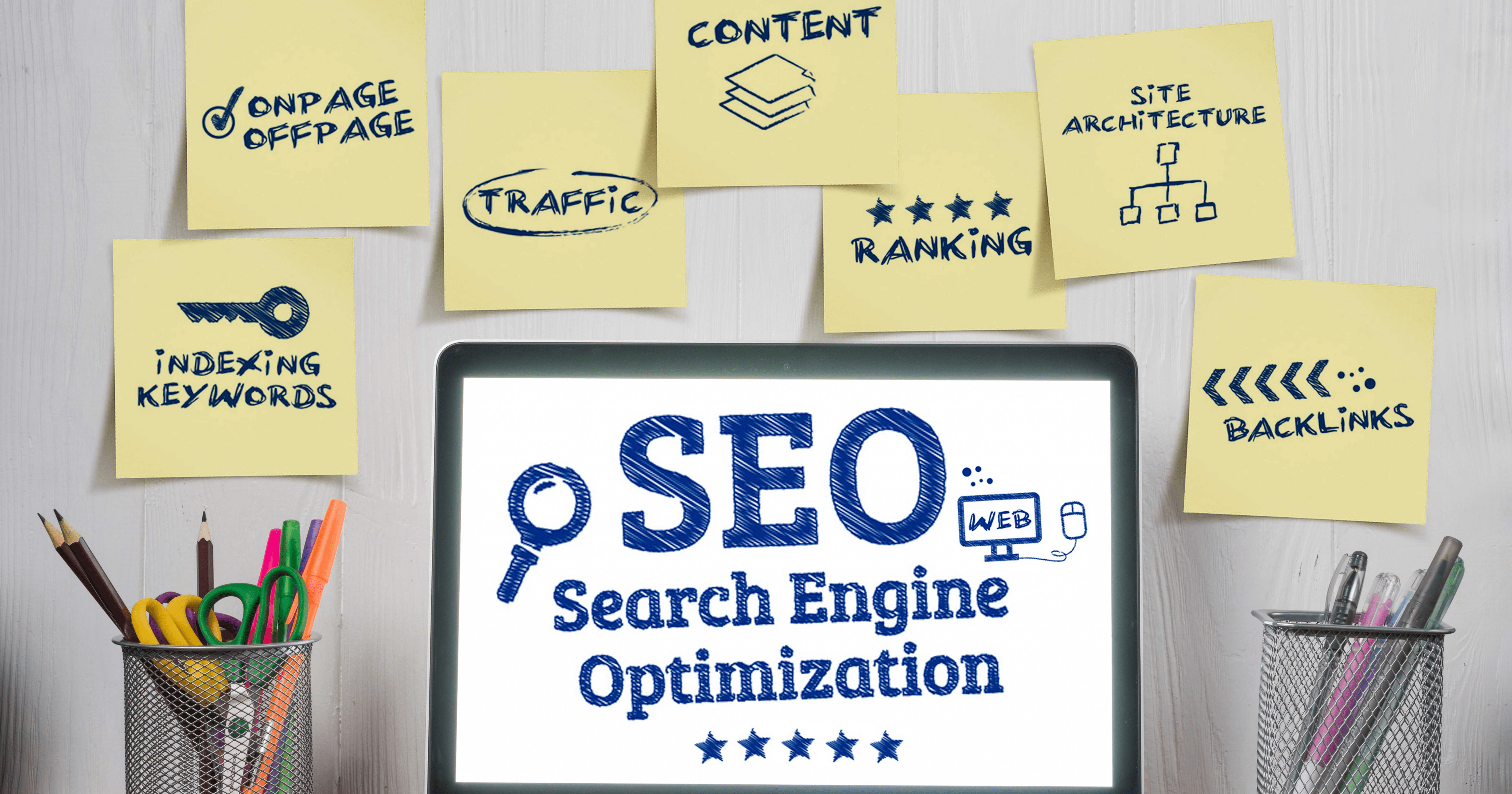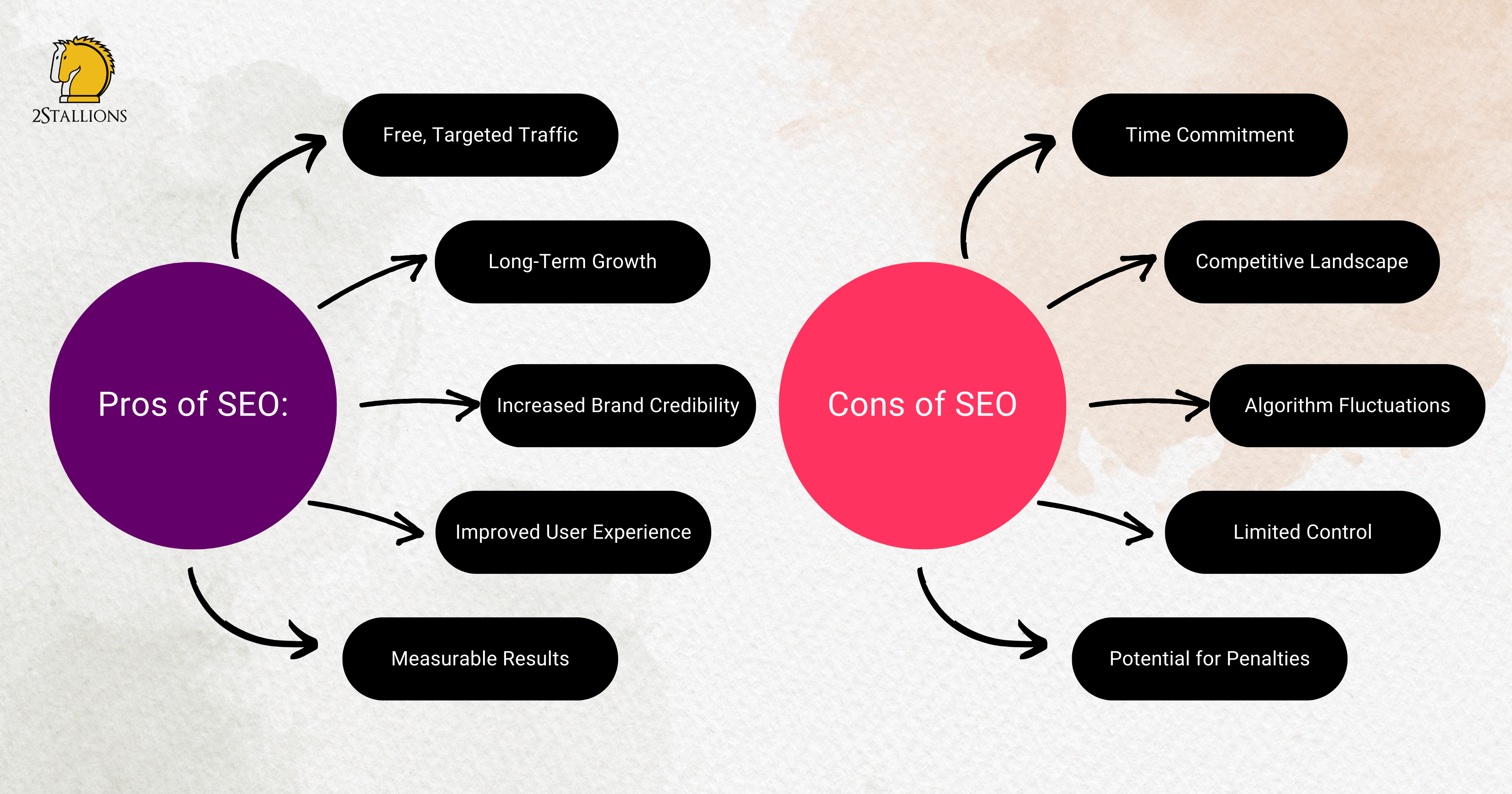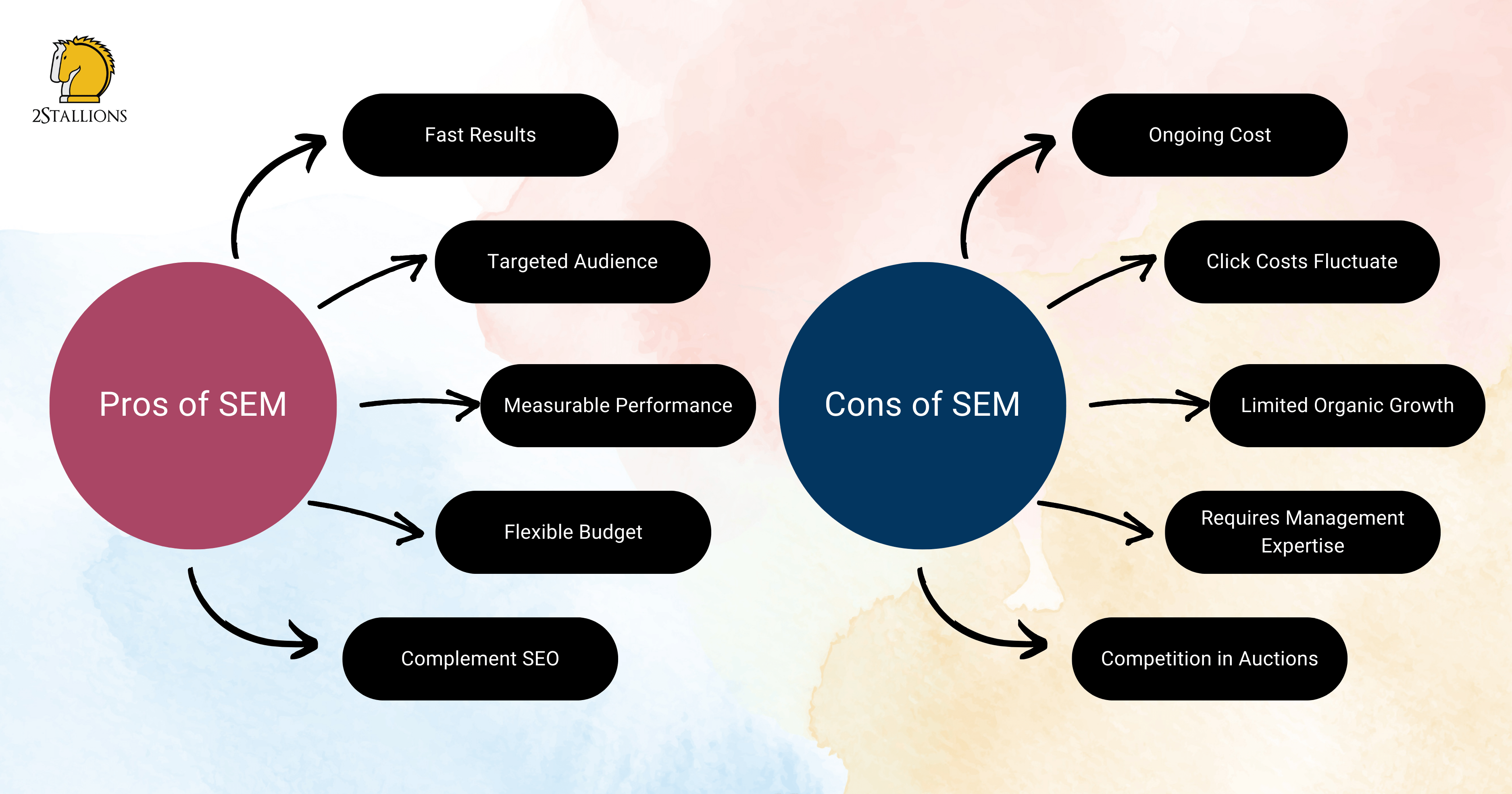Content
SHARE

Regarding driving traffic to your website, two key strategies often come up: SEO and SEM. But what exactly do these terms mean, and which one is right for you? Let’s discover the world of Search Engine Optimisation (SEO) and Search Engine Marketing (SEM). 
Understanding the Basics of SEO and SEM
When establishing a solid online presence, it’s crucial to understand the fundamentals of SEO and SEM. These two acronyms, SEO and SEM, are often used interchangeably, but they refer to two distinct strategies that can help improve your website’s visibility in search engine results.
Defining SEO: The Key to Organic Traffic
Let’s start by delving into the world of SEO, which stands for Search Engine Optimisation. This practice revolves around optimising your website and its content to enhance its visibility in search engine results pages (SERPs). By implementing a robust SEO strategy, you can organically attract more visitors to your website without relying on paid advertising.
So, how does SEO work? Search engines like Google use complex algorithms to determine the relevance and quality of websites. By understanding these algorithms, you can optimise your website with relevant keywords, high-quality content, and other factors that search engines consider when ranking websites.
One crucial aspect of SEO is keyword research. By identifying the keywords that your target audience will likely use when searching for products or services similar to yours, you can strategically integrate these keywords into your website’s content. This helps search engines recognise the relevance of your website to specific search queries, increasing the likelihood of your website appearing higher in the SERPs.
However, SEO is not just about keywords. Search engines also consider factors like website loading speed, mobile-friendliness, user experience, and the number of quality backlinks pointing to your website. By optimising these aspects, you can improve your website’s overall performance and increase its chances of ranking higher in search engine results.
Defining SEM: Paid Search Strategies
Now, let’s turn our attention to SEM, which stands for Search Engine Marketing. Unlike SEO, which focuses on organic traffic, SEM involves using paid advertising to promote your website on search engines.
One of the most popular platforms for SEM is Google Ads. With Google Ads, you can set up paid search campaigns and bid on specific keywords. When someone searches for those keywords, your website will appear at the top of the search engine results pages, marked as an advertisement.
SEM offers immediate visibility, as your website can appear in search results when you launch paid campaigns. This can be particularly beneficial if you’re looking to drive targeted traffic to your website quickly.
However, it’s important to note that SEM can be a costly endeavour, especially if you’re targeting highly competitive keywords. The cost per click (CPC) for popular keywords can be relatively high, and you need to carefully manage your budget to ensure you’re getting a return on your investment.
Another aspect of SEM is remarketing, which involves targeting users who have previously visited your website. By displaying targeted ads to these users as they browse other websites or use search engines, you can increase the chances of them returning to your website and converting into customers.
Defining SEO: The Main Differences Between SEO and SEM
How SEO and SEM Target Users
One of the main differences between SEO and SEM is how they target users. With SEO, you aim to attract organic traffic by optimising your website and content to rank higher in search engine results. On the other hand, SEM targets users based on the keywords they’re searching for by displaying paid ads at the top of search engine results pages.
The Impact of SEO and SEM on Website Visibility
Another distinction between SEO and SEM is their impact on website visibility. SEO focuses on long-term visibility, as building and optimising your website to rank higher in search engine results takes time. On the other hand, SEM provides immediate visibility through paid ads, allowing you to appear at the top of search results instantly. Both strategies can be effective, depending on your goals and timeframe.
Pros and cons of SEO
The Benefits of a Strong SEO Strategy
One of the significant advantages of SEO is its long-term potential. A robust SEO strategy can attract steady organic traffic over time. Additionally, organic search results often instil trust in users, who perceive organic listings as more credible. Moreover, with SEO, there are no direct costs for clicks, making it a cost-effective strategy in the long run.
Potential Challenges with SEO
However, SEO has its challenges. It requires ongoing effort and continuous optimisation to maintain and improve your rankings. Achieving top positions in search results can be highly competitive, especially for popular keywords. SEO is also a long-term strategy, and it may take time to see significant results, which can be a downside if you’re looking for immediate traffic.
Pros and cons of SEM
Advantages of Using SEM
One of the most significant advantages of SEM is its immediate impact. By running paid search campaigns, you can appear at the top of search results and immediately drive targeted traffic to your website. SEM also offers precise targeting options, allowing you to reach specific demographics or target audiences based on their interests and behaviour. Furthermore, with SEM, you have more control over your campaign budget and can easily track and measure your ROI.
Potential Downsides of SEM
While SEM can deliver fast results, it can also be costly, especially for highly competitive keywords. You’ll need to set aside a budget for your paid campaigns, and the cost per click can add up quickly. Additionally, once you stop running paid ads, your visibility will diminish, unlike SEO, where you can still generate traffic through organic rankings. It’s also essential to constantly monitor and optimise your campaigns to ensure they deliver the desired results.
Deciding Between SEO and SEM for Your Business
Factors to Consider When Choosing SEO or SEM
When deciding between SEO and SEM, several factors come into play. You must consider your goals, timeline, budget, and industry competition. SEO is ideal if you’re looking for long-term results and have the time to optimise your website. SEM, on the other hand, is suitable if you’re looking for immediate visibility and have a budget to allocate towards paid advertising. It’s also worth considering the competitiveness of your industry and the keywords you want to target.
Balancing SEO and SEM in Your Digital Marketing Strategy
In many cases, combining both SEO and SEM can be highly effective. You can maximise your online visibility and reach a wider audience by implementing a well-rounded digital marketing strategy incorporating organic and paid search efforts. SEO can help establish your website’s long-term presence, while SEM can provide immediate visibility and boost your online presence. Regularly monitoring and optimising both strategies will ensure you get the most out of your digital marketing efforts.
In conclusion, SEO and SEM are two distinct strategies for driving traffic to your website. Both have advantages and limitations, and choosing between them depends on your goals, budget, and timeline. Understanding the differences between SEO and SEM and how they can work together can help you make an informed decision and develop a digital marketing strategy that suits your business needs. So, whether you invest in optimising your website for organic traffic or running paid search campaigns, the key is to continuously monitor, analyse, and refine your approach to ensure success in the ever-changing world of digital marketing.
Frequently Asked Questions About SEO and SEM
Which Is Better, SEO or SEM?
The best approach depends on your specific goals and budget. SEO is an excellent option for building long-term organic traffic if you’re on a tight budget and willing to invest time and effort. Suppose you need faster visibility or want to target specific demographics with laser focus. In that case, SEM with PPC ads can be a good choice. A combined SEO and SEM strategy often delivers the best results, giving you both organic and paid search presence.
What Do You Like Most About SEO and SEM?
- About SEO: I appreciate how SEO rewards high-quality content and user-friendliness. It encourages informative, well-structured, engaging websites, benefiting the user experience.
- About SEM: I find the targeted nature of SEM campaigns fascinating. You can tailor your message to specific demographics and interests, allowing for highly relevant advertising.
What Is SEO and SEM For Beginners?
- SEO: Imagine SEO like making your website a magnet for relevant searches. You use keywords, informative content, and technical improvements to make your site attractive to search engines, increasing the chances of organic discovery.
- SEM: Think of SEM as a way to “rent” space at the top of search results. You create targeted ads based on keywords and demographics, paying to display your website prominently for specific searches.
What's Better for Brand Visibility: SEO or SEM?
In the long run, a strong SEO strategy is generally better for brand visibility. Organic ranking establishes your brand as a trusted authority in your field. However, SEM with PPC ads can boost visibility quickly, especially for new brands. The ideal scenario is to use both for a well-rounded strategy. With SEO, you build long-term brand recognition, while SEM gives you immediate exposure and control over your messaging.
















